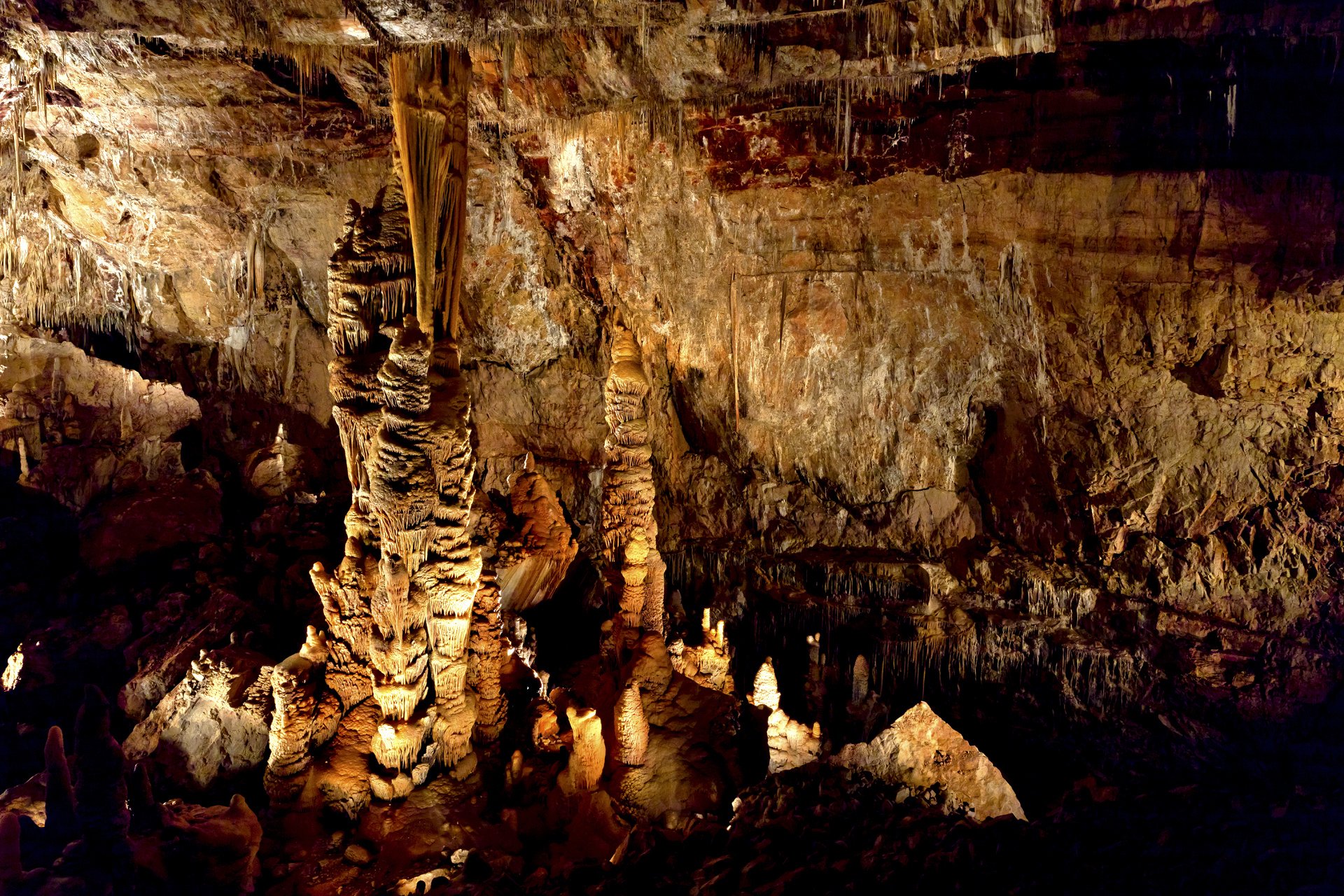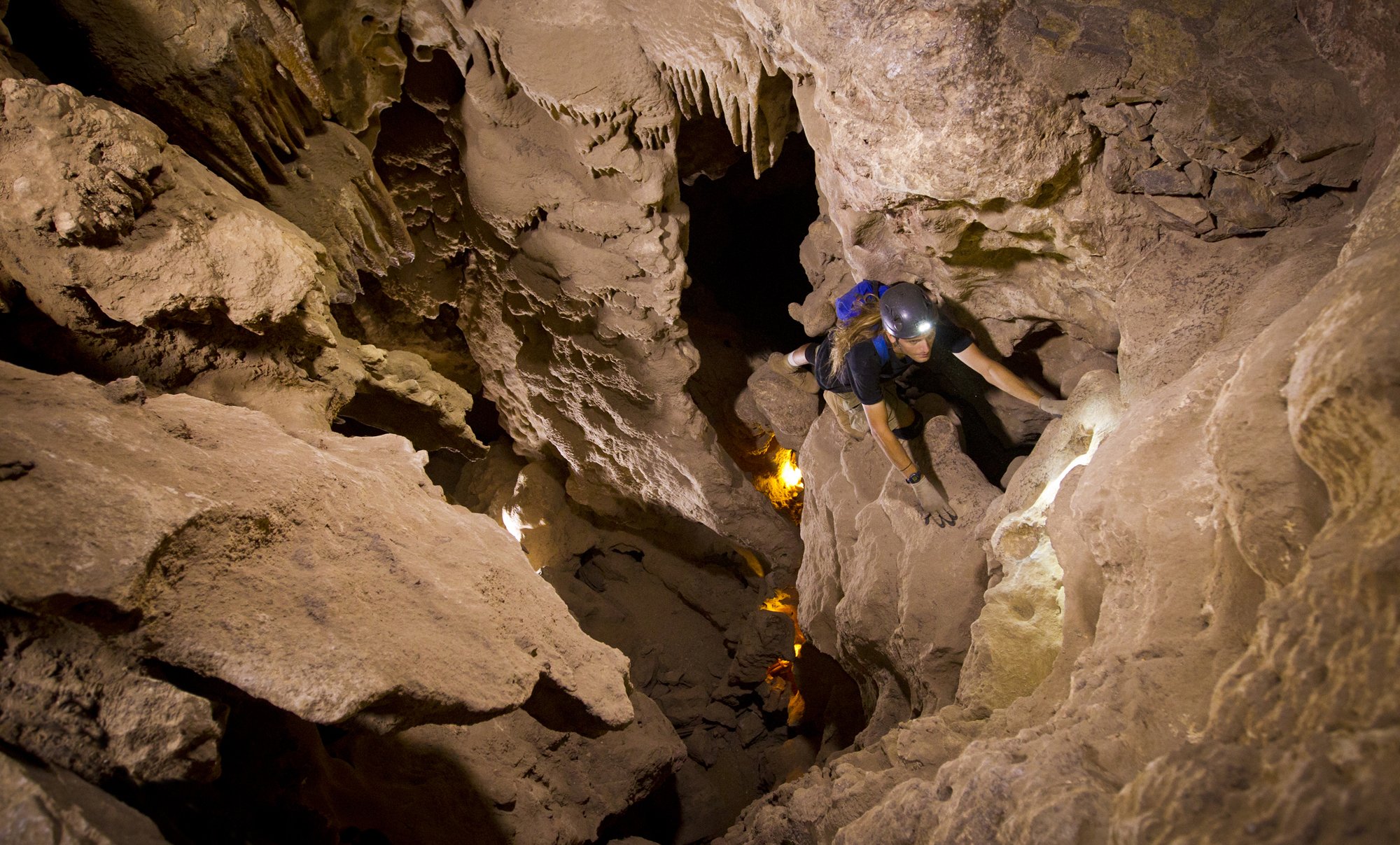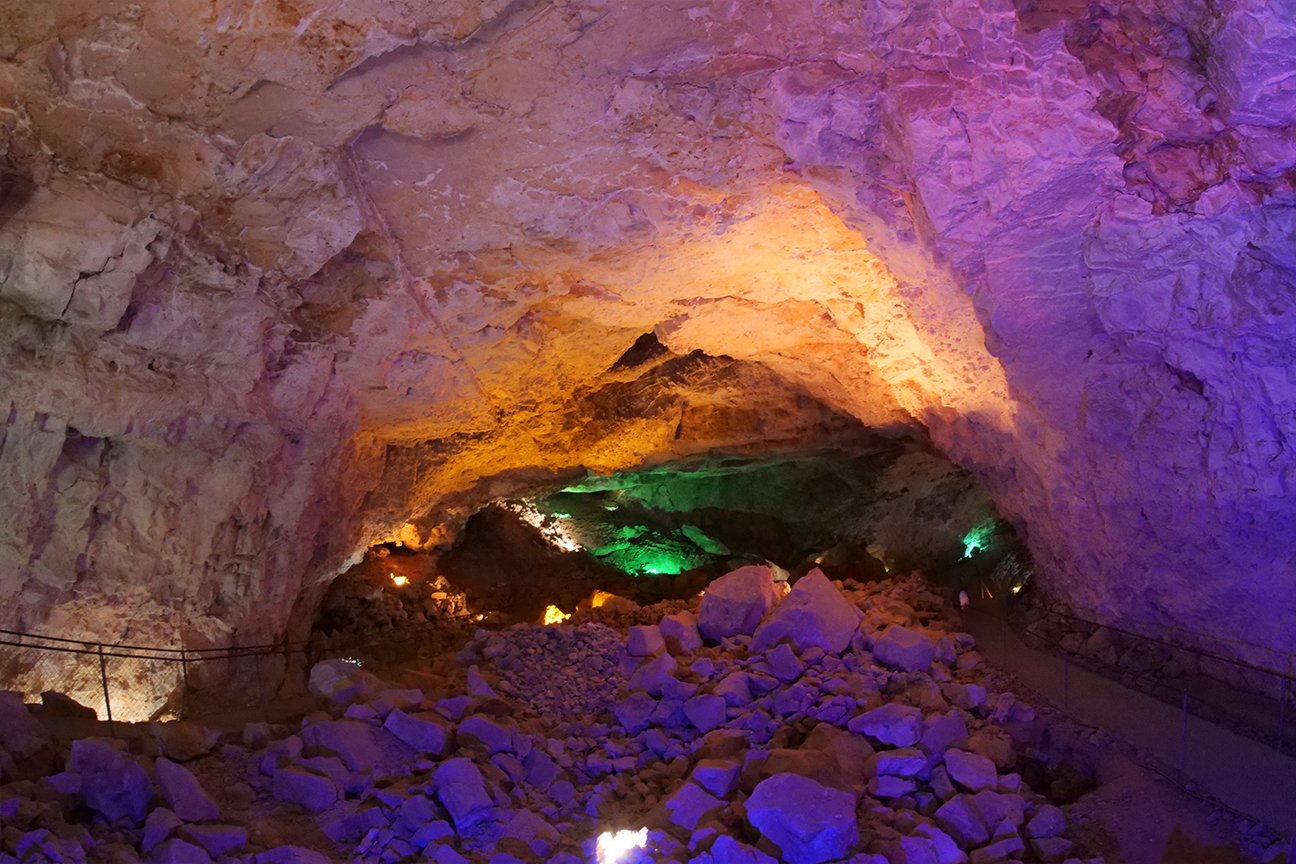What Lies Beneath




Like many, my first encounter with Arizona took place a mile above an ancient canyon floor, where a thin metal railing, a warm breeze and 18 miles stood between me and the other side of the Grand Canyon. It had taken millions of years for nature to carve out each impressive layer of red rock below where I stood on the hard-packed earth, yet little did I know that, far below the surface of the entire state, thousands of subterranean natural wonders were waiting to be explored. Arizona is known for its above-ground beauty — where awe-inspiring deserts, fragrant pine forests, hidden waterfalls and world-renown natural wonders dot the landscape — but it’s below ground that the state’s true beauty really begins to shine.
“Since there are so many natural wonders above the surface you see when traveling through the state, the wonders below often get forgotten,” explains Arizona native Sinda Sutton, park ranger II, environmental education coordinator and certified interpreter trainer for the Arizona State Parks and Trails at Kartchner Caverns State Park. “Even growing up here we would go visit or take family to the Grand Canyon, the vast deserts or to the ponderosa pine forests, but never caves. It honestly wasn’t until I was an adult that I learned we had all these hidden majestic natural wonders here. Once I had visited them, I started taking my visitors so they could see everything Arizona has to offer above and below ground.”
Scientists estimate that there are more than 4,000 caves hidden beneath the surface of Arizona’s landscape, some of which are open to the public and many more that have yet to be explored. Each cave offers its own experiences and adventures for visitors willing to delve into the depths of the dark hollows. From organized photography tours of Arizona’s only “living” cave to exploring a former lava tube now filled with ice, here are a few of the most exclusive below-ground experiences throughout Arizona.
Kartchner Caverns State Park
The Kartchner Caverns were first discovered in 1974 by a pair of college students who kept the cave a secret until 1978 when they let the property owners in on their discovery. The caverns — which remain 70 degrees with 98% humidity year-round — opened to the public in 1999, allowing visitors to enter the crystal-encrusted hallways and venture down into the celebrated Rotunda-Throne Room to view rare cave formations and dripping stalactites that continue to actively change the cave’s milieu. There was once a two-year waiting list to enter this Southeastern Arizona cave. Thankfully, that’s no longer the case and visitors can make a reservation for a tour online before arriving at the state park. For a more exclusive experience, book the once monthly photographer tour for an intimate perspective at how the cave was formed and the mysteries behind some of the more unusual formations.
Grand Canyon Caverns
Located 210 feet below the surface of the earth, the Grand Canyon Caverns are equally as impressive as their above-ground counterpart and are part of the largest dry cavern system in the United States. An elevator takes guests down 21 stories into this natural limestone cavern, where brave explorers are free to wander through the Chapel of the Ages as it stretches the length of two football fields. Guided tours range from 45 minutes to 2.5 hours, but the ultimate booking in this impressive cavern is a table reservation at the Caverns Grotto located 200 feet below ground in the cave itself.
Lava River Cave
Formed 700,000 years ago from a lava flow that hardened into an underground tube, the Lava River Cave is located near mile marker 230 off US 180 in Flagstaff. Although molten lava once flowed through this tunnel, visitors are more likely to see ice than lava these days as the cave averages a temperature of around 40 degrees from its location in the Ponderosa pine forest. Low ceilings and slippery rocks make this more of an adventurous self-guided experience than some of the other caves on this list, but two flashlights and the right shoes will arm visitors with everything they need to enjoy this tube-like wonder in all its natural splendor. Although the cave is open year-round, the roads leading to it are typically closed during winter, meaning the only way in is by snowshoeing or cross-country skiing.
Colossal Cave Mountain Park
Legends of train robbers and ghosts lurk beneath the ground at Colossal Cave Mountain Park, where an intricate series of stalactites, stalagmites, flowstone, box work and helictites create an eerie and mystical environment inside the hollowed halls. The cave was first discovered in 1879, but today is home to two threatened species of female bats that rotate from the higher and lower elevations throughout the year. Visitors to the caves can choose from tours ranging from classic (family-friendly) to wild (hardhats, lights and full-fingered gloves required), where they begin by descending six stories down a series of 363 steps into the 70-degree Fahrenheit cave before venturing off on their chosen tour.
